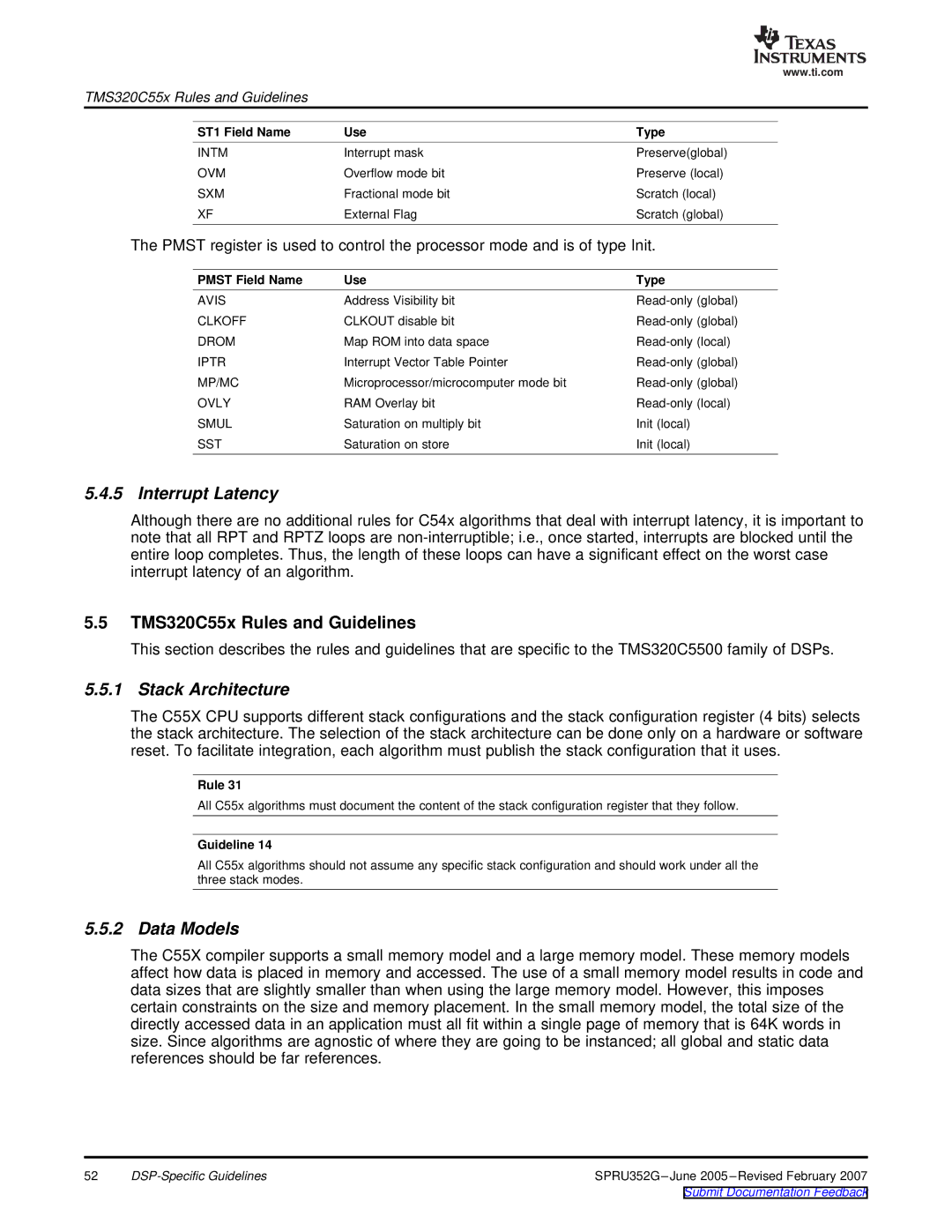
www.ti.com
TMS320C55x Rules and Guidelines
ST1 Field Name | Use | Type |
INTM | Interrupt mask | Preserve(global) |
OVM | Overflow mode bit | Preserve (local) |
SXM | Fractional mode bit | Scratch (local) |
XF | External Flag | Scratch (global) |
The PMST register is used to control the processor mode and is of type Init.
PMST Field Name | Use | Type |
AVIS | Address Visibility bit | |
CLKOFF | CLKOUT disable bit | |
DROM | Map ROM into data space | |
IPTR | Interrupt Vector Table Pointer | |
MP/MC | Microprocessor/microcomputer mode bit | |
OVLY | RAM Overlay bit | |
SMUL | Saturation on multiply bit | Init (local) |
SST | Saturation on store | Init (local) |
5.4.5 Interrupt Latency
Although there are no additional rules for C54x algorithms that deal with interrupt latency, it is important to note that all RPT and RPTZ loops are
5.5TMS320C55x Rules and Guidelines
This section describes the rules and guidelines that are specific to the TMS320C5500 family of DSPs.
5.5.1 Stack Architecture
The C55X CPU supports different stack configurations and the stack configuration register (4 bits) selects the stack architecture. The selection of the stack architecture can be done only on a hardware or software reset. To facilitate integration, each algorithm must publish the stack configuration that it uses.
Rule 31
All C55x algorithms must document the content of the stack configuration register that they follow.
Guideline 14
All C55x algorithms should not assume any specific stack configuration and should work under all the three stack modes.
5.5.2 Data Models
The C55X compiler supports a small memory model and a large memory model. These memory models affect how data is placed in memory and accessed. The use of a small memory model results in code and data sizes that are slightly smaller than when using the large memory model. However, this imposes certain constraints on the size and memory placement. In the small memory model, the total size of the directly accessed data in an application must all fit within a single page of memory that is 64K words in size. Since algorithms are agnostic of where they are going to be instanced; all global and static data references should be far references.
52 | SPRU352G |
